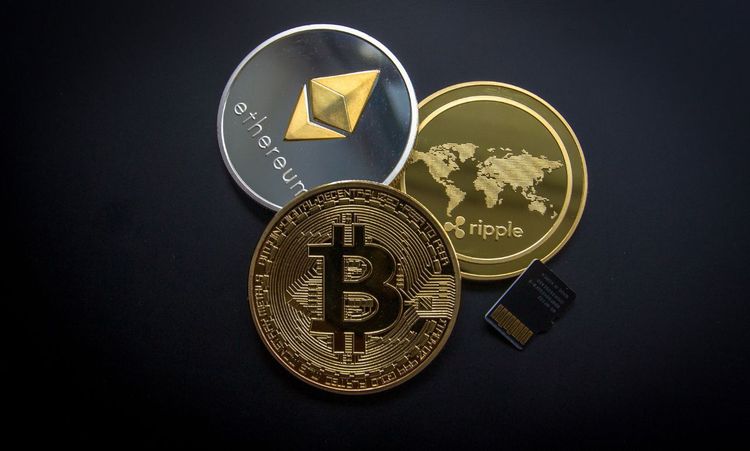When someone asks, “What is the Role of Tokenomics in Successful Crypto Launches?” the answer is bigger than just supply and demand. Tokenomics is the invisible engine that powers a cryptocurrency’s adoption, credibility, and long-term growth.
Get it wrong, and even the best project with the flashiest whitepaper collapses within months. Get it right, and you’ve got the foundation for a sustainable ecosystem that rewards early believers while still being attractive to future investors.
Think of tokenomics as the business model of blockchain. It explains how value is created, distributed, and sustained over time. Without it, a crypto launch becomes a speculative gamble. With it, you get the structure that helps projects like Ethereum or BNB thrive well beyond their initial coin offering.
In this article, we’ll break down the core pillars of tokenomics—from incentive design to governance—and explain why every serious project must treat it as the heartbeat of its launch.
The Foundational Pillars of Launch Tokenomics
Every successful launch sits on three big tokenomics pillars: utility, distribution, and sustainability.
Utility ensures people actually have a reason to hold or use the token beyond speculation. Distribution ensures fairness, preventing whales from centralizing control. Sustainability ensures that the token can maintain value even when hype fades.
Look back at projects like Solana. Its initial tokenomics emphasized utility by making the token central to transaction fees and staking. Compare that to failed meme coins that only relied on hype, and the difference becomes obvious. Investors want more than memes—they want to know the economics work.
A project without these pillars ends up like a startup without a business plan. Sure, it might get buzz early on, but it eventually fizzles out.
Incentive Structures and Rewards
Incentives are the carrots that drive participation. Think staking rewards, liquidity mining, or yield farming. If designed properly, they attract both early adopters and long-term holders. Poorly designed incentives, however, create pump-and-dump schemes.
Take Axie Infinity as an example. Its play-to-earn model gave early users strong incentives. However, when reward structures became unsustainable, token inflation kicked in, and the ecosystem struggled. Contrast that with Ethereum’s staking incentives after the Merge—moderate but sustainable, keeping validators motivated without flooding the market.
The lesson? Incentives should balance short-term excitement with long-term economic health. If rewards only exist to hype up token sales, they eventually backfire.
Governance Mechanisms
Tokenomics isn’t just about money; it’s also about power. Governance mechanisms determine who makes decisions in the ecosystem. This can range from voting rights on proposals to deciding how treasury funds are spent.
DAOs (Decentralized Autonomous Organizations) became popular because they empower token holders. For example, Uniswap governance tokens allow holders to propose and vote on upgrades. That sense of control attracts community members who feel they’re shaping the project’s future.
However, governance must avoid token capture. If a few whales hold the majority of tokens, democracy turns into an oligarchy. Balancing governance is like running a government—it only works if decision-making power is spread out fairly.
Value Accrual and Deflationary Measures
Value accrual answers the big question: why should a token’s price go up over time? Without a clear path for value, the market treats tokens as empty promises.
Deflationary mechanics like token burns or capped supply can help. Binance Coin (BNB) is a great example. Its quarterly token burns tied to exchange revenues created a natural deflationary pressure, rewarding long-term holders.
But value accrual isn’t just about scarcity. It’s also about growing demand. Ethereum’s switch to proof-of-stake, combined with EIP-1559 (which burns a portion of transaction fees), created a model where demand for network use drives token value. That’s sustainable economics in action.
Strategic Tokenomics Design for Pre-Launch Success
Pre-launch tokenomics is where the real strategy happens. Before tokens ever hit the market, founders need to set clear rules: how much supply exists, who gets allocations, and what vesting schedules look like.
Think of this stage like laying out the seating chart before a big wedding. If you place too many tokens in private investors’ hands without lock-ups, they’ll dump on retail buyers after launch. But if you spread allocations too thin, you risk underfunding development and marketing.
Projects like Polygon (MATIC) carefully structured their pre-launch allocations with investor vesting schedules and ecosystem growth funds. This helped them avoid the chaos of sudden sell-offs while still incentivizing builders to stick around.
Building a Robust Token Cap Table and Allocation Strategy
A token cap table is the distribution map of your project. It outlines how many tokens go to founders, advisors, early investors, the community, and the ecosystem fund. Get this wrong, and your project’s credibility tanks.
If founders hoard too many tokens, people fear exit scams. If investors hold too much, people expect dumping. The sweet spot is transparency and balance. For example, Avalanche shared a clear token allocation model upfront, helping build trust before its mainnet went live.
Allocations should also align with project goals. A DeFi project might allocate more to liquidity mining, while a gaming project might prioritize play-to-earn rewards.
The Interplay of Tokenomics and Marketing Narrative
Here’s the uncomfortable truth: tokenomics doesn’t exist in isolation—it must sync with your marketing narrative. Investors don’t just buy math; they buy stories.
For instance, Dogecoin had no solid tokenomics, yet its meme-driven narrative attracted millions. But for serious projects, tokenomics and narrative must reinforce each other. If you claim decentralization but 60% of your supply sits with insiders, your story collapses.
Marketing should communicate why your tokenomics make sense. The story should explain what the token does and why it matters. Think of it as translating complex economics into something every investor can understand.
Launch Execution
When launch day arrives, tokenomics goes from theory to reality. Liquidity provisioning, exchange listings, and community hype all play their roles. But without strong tokenomics, even the best launch strategy fizzles.
Take ICP (Internet Computer Protocol) versus Solana. ICP launched with huge hype but poor token distribution crushed confidence. Solana, on the other hand, paired careful tokenomics with developer incentives, giving it staying power.
Execution must align with economics. If you promise fair distribution, show it on launch day. If you promise scarcity, don’t secretly mint more tokens. Transparency is everything.
Tailoring Tokenomics to Different Launch Models
Not every launch looks the same. ICOs, IDOs, and fair launches each require different tokenomics designs.
- ICOs rely on presale allocations, so lock-ups are critical to prevent dumping.
- IDOs (decentralized offerings) focus more on liquidity pools and fair access.
- Fair launches, like Yearn Finance (YFI), distribute tokens purely to community members, avoiding presales altogether.
A one-size-fits-all approach doesn’t work. Successful founders spend months testing tokenomics models before launch.
Post-Launch Sustainability
The real test of tokenomics comes after the hype fades. Post-launch sustainability depends on alignment between token supply and ecosystem growth.
Rewards must adapt over time. Token emissions that made sense early on may flood the market later. Bitcoin’s halving events show how controlled supply reductions sustain value over time.
Sustainability also depends on community engagement. If token holders feel ignored, they exit. That’s why DAOs, treasury allocations, and governance votes are vital after launch.
The Role of Token Burns and Buybacks in Sustained Value Accrual
Token burns and buybacks are like stock buybacks—they signal commitment and reduce supply, increasing scarcity and potential value.
BNB’s burn strategy is legendary. By linking burns to exchange profits, Binance aligned token value with business success. Similarly, MakerDAO uses token buybacks to stabilize its DAI stablecoin.
However, burns and buybacks can’t fix bad fundamentals. They only work when real demand exists.
Conclusion
So, what is the role of tokenomics in successful crypto launches? It’s the backbone, the framework, and the strategy that separates hype-driven collapses from sustainable success stories.
From pre-launch allocation strategies to post-launch governance, tokenomics defines how value flows, who gets rewarded, and how the ecosystem evolves.
Think of tokenomics as your project’s constitution. Without it, chaos rules. With it, you set the rules for growth, governance, and sustainability. Treat it not as an afterthought, but as your blueprint for success.




